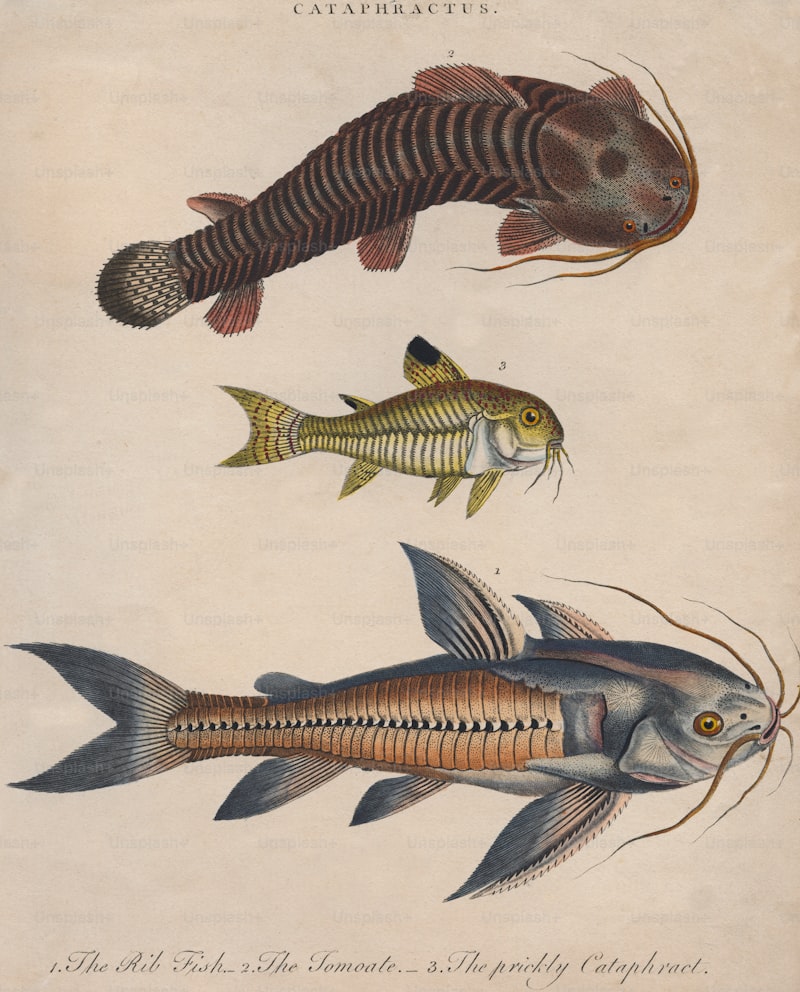One of the primary concerns with marine invasive species is their ability to outcompete native species for resources. They may have no natural predators in their new environment, allowing them to multiply rapidly and consume resources that native species rely upon for survival. This competition can lead to a decline in biodiversity as native species struggle to adapt or face local extinction.
Moreover, invasive species can alter habitat structure and reduce the quality of the ecosystem. For instance, a species of algae introduced from another region might overgrow and smother native corals, depriving them of sunlight and oxygen. This not only impacts the corals but also the myriad of fish and invertebrates that depend on them for food and shelter.
The economic impacts of marine invasive species are also profound. Fisheries may suffer as populations of commercially important species decline due to competition or predation by invaders. Coastal infrastructure, such as docks and pipes, can be damaged by invasive species that attach and accumulate in large numbers.
Efforts to manage and control marine invasive species include strict biosecurity measures at ports and the development of early detection systems. Additionally, raising public awareness about the risks associated with introducing non-native species into marine environments is crucial for prevention.
Underwater Invaders: How Marine Invasive Species Are Disrupting Ecosystems
Imagine a silent invasion happening beneath the ocean’s surface. Marine ecosystems, once in perfect harmony, are now facing a growing threat: invasive species. These underwater invaders, often introduced unintentionally through ship ballast water or aquarium releases, are causing significant disruptions to native habitats.
One of the main issues with marine invasive species is their ability to outcompete native organisms. They often have no natural predators in their new environment, allowing them to multiply rapidly and dominate resources. This disrupts the delicate balance that ecosystems rely on for stability.
Take the example of the lionfish in the Caribbean. Originally from the Indo-Pacific, these striking predators were introduced to the Atlantic Ocean, where they have decimated local fish populations. With their voracious appetites and unchecked reproduction, lionfish have become a prime example of how invasive species can wreak havoc on coral reefs and other marine environments.
Moreover, invasive species can alter entire ecosystems by changing the physical structure of habitats. For instance, zebra mussels in the Great Lakes attach themselves to hard surfaces, clogging water intake pipes and altering the composition of lake bottoms. This not only impacts native species but also affects industries and communities reliant on these water bodies.
The economic impacts of marine invasive species are also profound. Fisheries can suffer as invasive species outcompete commercially valuable fish, leading to reduced catches and financial losses. Tourism, too, can be affected as degraded ecosystems lose their appeal to visitors seeking pristine marine environments.
Efforts to control marine invasive species often involve complex management strategies. These may include early detection systems, strict biosecurity measures in ports, and public awareness campaigns to prevent unintentional introductions. Yet, despite these efforts, the spread of invasive species remains a daunting challenge for marine conservationists worldwide.
Understanding the dynamics of marine invasive species is crucial for safeguarding our oceans’ health. By studying how these invaders disrupt ecosystems, scientists and policymakers can develop more effective strategies to mitigate their impact and preserve the diversity and resilience of marine life.
Oceanic Intruders: Threats Posed by Invasive Species to Coastal Biodiversity
The threat posed by invasive species to coastal biodiversity is not merely theoretical; it’s a tangible reality. These intruders often hitchhike on ships’ hulls or in ballast water, traveling vast distances to new habitats where they can proliferate unchecked. Once established, they compete aggressively for resources, outcompeting native species that have evolved within these ecosystems over millennia.
Take, for instance, the voracious lionfish. Originally from the Indo-Pacific, it has invaded the Caribbean and Western Atlantic with devastating consequences. Known for its indiscriminate appetite and rapid reproduction, the lionfish consumes native fish populations at an alarming rate, upsetting the delicate balance of coral reefs and rocky shores.
Furthermore, invasive algae and seaweeds can smother native vegetation, depriving fish and invertebrates of their homes and breeding grounds. This disruption echoes through the food web, affecting everything from small crustaceans to marine mammals that depend on these habitats for survival.
Scientists and conservationists are racing against time to mitigate the impacts of these invaders. Strategies range from early detection and rapid response protocols to community engagement in monitoring efforts. By understanding the pathways of invasion and identifying vulnerable ecosystems, proactive measures can be taken to prevent future incursions and protect coastal biodiversity.
As stewards of our oceans, it falls upon us to heed the call of conservation. Each action we take, whether through responsible boating practices or supporting local initiatives, contributes to safeguarding the diversity of life that thrives along our shores. After all, the ocean connects us all, and it is our collective responsibility to ensure its health and vitality for generations to come.
Battle Below the Waves: Protecting Native Habitats from Marine Invaders
Native habitats, from kelp forests to coral reefs, provide essential shelter and sustenance for a myriad of marine species. They are finely tuned ecosystems where each organism plays a vital role. However, when invasive species enter the scene, they can outcompete native organisms for resources, disrupt food chains, and alter habitat structures. This disruption can have cascading effects, leading to the decline of native species populations and compromising the resilience of entire ecosystems.
The challenge of protecting native habitats from marine invaders is multifaceted. Prevention is key: strict regulations on ballast water discharge from ships and careful monitoring of aquaculture practices can help curb the spread of invasive species. Early detection and rapid response protocols are also crucial. By identifying invasive species in their early stages of establishment, conservation efforts can be targeted to prevent their widespread impact.

Innovative approaches, such as biosecurity measures and habitat restoration projects, offer hope in the fight against marine invaders. Biosecurity involves implementing strategies to minimize the risk of invasive species introductions, such as thorough hull cleaning and inspection protocols for vessels. Habitat restoration efforts aim to rehabilitate degraded ecosystems, enhancing their resilience against invasive species and restoring their ecological functions.
Ultimately, safeguarding native habitats from marine invaders requires a concerted global effort. It demands collaboration among governments, scientists, conservation organizations, and the public. By raising awareness, implementing effective management strategies, and fostering a deeper understanding of marine ecosystems, we can strive to preserve the wonders that lie beneath the waves for future generations.
From Ship Ballasts to Coral Reefs: The Spread of Marine Invasive Species
Marine invasive species pose a significant threat to global marine ecosystems, disrupting natural balances and causing ecological harm. One of the primary vectors facilitating their spread is through ship ballasts. These ballasts, used for stabilizing vessels at sea, inadvertently transport a plethora of marine organisms across oceans. Once released in ports or during ballast water exchange, these organisms can establish themselves in new habitats, often with devastating consequences.
Imagine ship ballasts as unwitting carriers of an ecological Trojan horse, ferrying tiny stowaways that hitch a ride from one marine environment to another. This phenomenon highlights the interconnectedness of our oceans and the vulnerabilities within their intricate ecosystems.
Coral reefs, often referred to as the rainforests of the sea for their biodiversity, are particularly susceptible to the impacts of invasive species. Species introduced via ballast water can outcompete native coral reef organisms for resources, disrupt symbiotic relationships, and even introduce diseases previously absent in these fragile ecosystems. The delicate balance that sustains vibrant coral communities can be thrown into disarray by the arrival of aggressive invaders.
The challenge of managing marine invasive species lies not only in prevention but also in mitigation strategies once they’ve taken hold. Conservation efforts increasingly focus on early detection and rapid response measures to minimize ecological damage. This proactive approach includes monitoring ballast water exchange protocols, developing technologies for treating ballast water, and enhancing public awareness about the inadvertent transport of species through maritime activities.
In the complex dance of oceanic currents and global shipping routes, understanding and mitigating the spread of marine invasive species remains a critical priority for marine conservationists worldwide. As we navigate the waters of environmental stewardship, addressing the unintended consequences of maritime transport on marine biodiversity is crucial to preserving the health and resilience of our oceans for future generations.
Silent Threats: How Invasive Species Are Reshaping Marine Food Webs

These invaders, ranging from voracious lionfish to prolific zebra mussels, exploit new environments with remarkable adaptability. Their unchecked proliferation can decimate local species populations, outcompeting native organisms for resources such as food and habitat. This competitive edge often tips the scales in favor of the invaders, altering the dynamics of marine communities in profound ways.
Consider the lionfish, with its striking appearance and venomous spines. Native to the Indo-Pacific, it has now infiltrated Atlantic waters with alarming speed. Lacking natural predators in its new habitat, the lionfish gorges on juvenile fish vital to coral reef health, disrupting the delicate balance of these vibrant ecosystems.
Similarly, zebra mussels, originally from the Caspian Sea, have spread across North America’s freshwater lakes and rivers. Their prolific filter-feeding habits drastically alter water clarity and nutrient levels, impacting native species and infrastructure alike.
The consequences of these invasions ripple throughout marine ecosystems. Native species may face extinction or forced adaptation, while local fisheries and economies reliant on marine resources suffer. The ecological and economic toll of invasive species underscores the critical need for proactive measures in biodiversity conservation and management.
As stewards of our planet’s oceans, we must recognize the threat posed by invasive species and take decisive action to mitigate their impact. Through scientific research, public awareness, and collaborative efforts, we can safeguard marine biodiversity and ensure the resilience of our oceans for future generations. The challenge ahead is formidable, but with concerted effort and global cooperation, we can protect our marine environments from the silent threats lurking beneath the waves.
Coastal Crisis: Mitigating the Impact of Invasive Species on Marine Environments
Imagine a bustling port where ships from around the world dock daily. Among their cargo hides tiny stowaways: invasive species hitching a ride to new shores. Once released into unfamiliar waters, these invaders can outcompete native species for resources like food and habitat. This imbalance can lead to devastating consequences, disrupting entire food webs and ecosystem functions.
One notorious example is the zebra mussel, originally from Eastern Europe. Introduced to North America in the 1980s, it rapidly spread through waterways, clogging pipes and disrupting local ecosystems. This scenario illustrates how a seemingly innocuous introduction can snowball into a full-blown ecological crisis.
The impact of invasive species isn’t just limited to local biodiversity. Fisheries, crucial for food security and livelihoods, can suffer as invasive species decimate fish populations or alter habitats. Coastal communities dependent on marine resources thus face economic hardships, amplifying the ripple effect of these invaders.
Mitigating this coastal crisis requires a multi-faceted approach. Early detection and rapid response strategies are crucial. By identifying new arrivals early on, authorities can act swiftly to contain and potentially eradicate invasive species before they establish a foothold.
Furthermore, public awareness and education play pivotal roles. When individuals understand the gravity of introducing non-native species into marine environments, they can make informed choices to prevent accidental introductions. Responsible boating practices and strict biosecurity measures at ports are essential steps towards curbing the spread of invasive species.
Frequently Asked Questions
Why are marine invasive species considered a threat to biodiversity?
Learn why marine invasive species pose a threat to biodiversity, exploring their impact on native ecosystems, species competition, and ecosystem stability.
What measures can be taken to prevent the spread of marine invasive species?
Learn about effective measures to prevent the spread of marine invasive species, crucial for protecting marine ecosystems. Key strategies include cleaning boats and equipment to remove invasive species, using only native species in aquariums, and adhering to ballast water management protocols. Stay informed to help preserve biodiversity.
How can communities and individuals help mitigate the impact of marine invasive species?
Learn effective strategies for communities and individuals to mitigate the impact of marine invasive species. Discover practical actions that can be taken to preserve marine ecosystems and biodiversity.
How do marine invasive species spread to new habitats?
Learn how marine invasive species spread to new habitats through various means such as ballast water discharge from ships, hull fouling, and accidental introductions via aquaculture or recreational boating. Understanding these pathways is crucial for mitigating their impact on ecosystems.
What are marine invasive species and how do they impact native habitats?
Learn about marine invasive species and their impact on native habitats. Discover how these non-native species disrupt ecosystems, outcompete local flora and fauna, and threaten biodiversity. Understand the ecological, economic, and social consequences of invasive species in marine environments.


